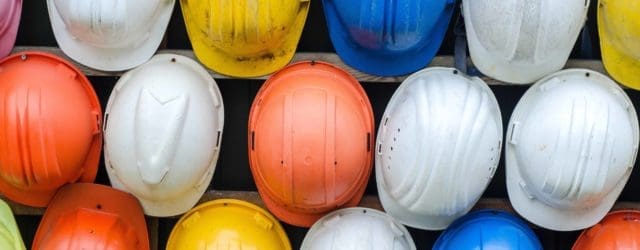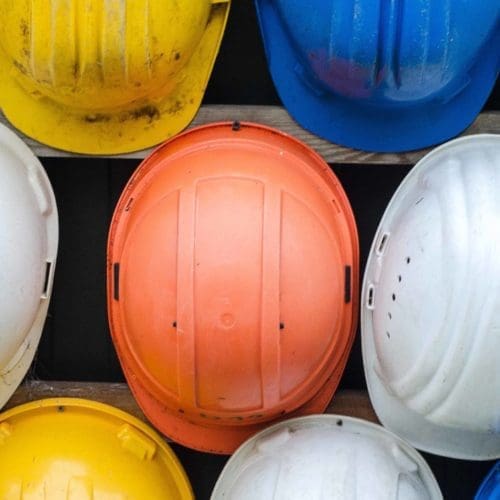ARCHITECTS’ ROUNDTABLE – JULY 2024
July 2024On 10 July, Beale & Co had great pleasure in hosting the latest of its ever-popular Architects’ Roundtable events.
The Roundtable event provided a timely opportunity for architects to share their views or experiences on some key issues that are currently affecting the industry and discuss the challenges and opportunities of today and the future. The event was well attended, with plenty of engagement on the day, demonstrating the relevance and importance of the main topics covered, namely:
- The use of artificial intelligence in the construction industry
- The Building Safety Act (market approach, appointments and RIBA guidance)
- The UK construction industry post-election
A summary note of the event is provided below. A further roundtable will be arranged in due course to follow up the points raised in these discussions and highlight new developments in the industry.
- The use of artificial intelligence (“AI”) in the construction industry
We were delighted to welcome Dale Sinclair, Head of Digital Innovation at WSP, to introduce the topic of the use of AI in the construction industry. The roundtable discussed how clients are beginning to ask more and more questions on what architects are doing about AI and how it will feature in their work. AI is not a new concept, however with the introduction of ChatGPT in November 2022, it has sprung into the public consciousness.
It is clear that the construction industry will use and be at the forefront of AI implementation. A recent RIBA survey showed that 41% of architect respondents are currently using AI (albeit principally for early stage processes, such as concept drawings), and 54% of respondents agree that in two years’ time AI will have been adopted in some form in their practices. The Infrastructure and Projects Authority has also been encouraging the use of AI, consistent with the previous Government’s push to modernise and promote the use of AI in public sector projects.
The consensus was that designers should see AI as their friend, and a platform or a way to ease workload pressures. AI may mean that designers will no longer have to make lots of small decisions (as AI can potentially do this for them), but instead will be able to focus on the bigger questions and challenges of the future, for example taking operational carbon out of what they do. The way forward is likely to be based around efficiency and embracing opportunities.
The threat of designers no longer being needed was also discussed. However, it was acknowledged that AI can only take us so far, and it will rely on the information provided by designers. When designers agree to provide their services with reasonable skill and care, relying on a machine would not likely satisfy this requirement. There is undoubtedly a human element to the construction industry which AI will not be able to replace.
The group also discussed potential legal concerns and challenges, such as those around intellectual property and GDPR. For example, generative AI tools are very much dependent upon the information put into them. If the information is incorrect, it could result in a designer unintentionally breaching third party intellectual property obligations, or in errors in one design being repeated a number of times. It will be important that designers understand the information being input into an AI process, the nature of the AI process (including any terms around the process retaining or claiming ownership of the outputs), limitations on the AI’s knowledge base, and that the outputs of such a process are carefully checked. A way to alleviate concerns would be for a designer to create their own internal programme of languages, objects, etc. for the AI model to use and develop, rather than relying on a third-party model.
Finally, the roundtable discussed their experiences with AI coming up during the tender stage/in contract documents. Attendees had generally not had this come up yet, although a few indicated they were starting to be asked about their use of AI as part of the tender process. It is evident that while AI brings lots of opportunity, there are also key risks to bear in mind and manage.
- The Building Safety Act 2022 (“BSA”)
We were delighted to welcome Dieter Bentley-Gockmann, Director at EPR Architects, who was involved in the drafting of the RIBA guidance and Principal Designer (“PD”) appointment, to introduce the topic. This topic was discussed at our roundtable event in September 2022, however the position has since moved on substantially, particularly with the introduction of secondary legislation such as the Building Regulations etc. (Amendment) (England) Regulations 2023 and the Building (Higher-Risk Buildings Procedures) (England) Regulations 2023, which came into force in October last year. The two key components to consider are the new dutyholder regime and the Higher-Risk Building process, which involves the gateway system, the Building Safety Regulator and golden thread requirements (see previous articles here and here).
There is still not much guidance yet from the government as to how they would like the new legislation to be applied, and it is clear that the new processes are very complex. It was discussed that understanding of the implications of the new regime is still limited in some areas (particularly with some clients), and that architects need to be proactive and cannot simply wait for the client to ask about the BSA or include provisions in their agreement. Having processes in place (e.g., standard letters, policies etc.) showing how you reflect the new regime is also key.
RIBA has been the main industry body which has produced guidance, as well as some helpful tools to send to clients and help designers to manage risk, and they have recently produced a PD appointment.
The roundtable discussed the underestimated amount of work that is needed for a Higher-Risk Building and the detrimental impact that rushing this work can have on a project. The focus of the new BSA procedures is to stop the “race to the bottom” mentality that Dame Judith Hackitt identified at the outset of the Grenfell inquiry. The industry is getting up to speed with what is required, and this will hopefully lead to better and safer buildings being built. There is currently a very high rate of rejection from the regulator, as we saw with Gateway 1 applications. It is likely that the Regulator is going to take a very hard line with the intent of making change to the industry.
The attendees talked about the requirement for designers and the PD to be competent. There are RIBA courses which can be undertaken by designers to demonstrate their competency to clients. In addition, designers have a requirement to confirm that the client is aware of their obligations under the BSA – RIBA have also prepared a standard letter which can be sent to clients for this purpose.
Some attendees described that clients are writing all of the Building Regulations into their appointments and adding onerous obligations into contracts. The roundtable discussed how it is important that any obligations which designers accept are not any terms which are more onerous than the position under the BSA. Any responsibility which designers do accept should be written into the scope and reflected in the fee.
- The UK construction industry post-election
The final topic centred around the recent general election and what its results mean for the UK construction industry. Labour achieved a landslide victory and Sir Kier Starmer has become the new UK Prime Minister (see our previous article on the general election here).
The Labour manifesto includes a huge push to building houses (1.5 million in the next 5 years), which will massively impact the construction industry. This sounds very optimistic, but it is 300,000 per annum which is relatively modest. The roundtable discussion acknowledged that whilst the UK does need the housing, requisite labour to help construct these is unavailable, and so it will be important to have a total focused approach as well as the funding to go with it. There will need to be a relaxation in planning strategy to enable applications to proceed swiftly, and there is a link between planning and the BSA Gateway, as discussed above. Devolved powers to the regions may assist with this, and we may have witnessed the first aspects of this following the recent mayoral meetings with the Prime Minister in the first few days of taking office. Attendees also touched upon the insolvencies of the modular companies which are being seen within the UK market, which will need to be addressed in order to contribute to the house-building initiative. On 18th September at the International Office Summit, Build-Off Site will launch their new IP guidance, which we helped to develop. This new guidance on managing IP for modern construction will hopefully enhance productivity and reduce costs for everyone involved in offsite construction, from conception to product supply.
The group also talked about Labour’s pledge to double onshore wind, triple solar power and quadruple offshore wind by 2030. Attendees generally felt that a new door appears to be opened, which will unlock a lot of power and opportunity, however new legislation is needed first in order to allow for these changes in their view. Only time will tell whether there is a need for ‘Great British Energy’. It is positive that large infrastructure projects like HS2 are not ruled out.
There is a general feeling of ‘less uncertainty’ for the UK construction industry following the election, and therefore also a time for opportunity – “watch this space”. We plan to reassess the evolving situation in the UK construction industry in around 100 days from now to see how Labour’s various pledges have taken shape.
Download PDF










